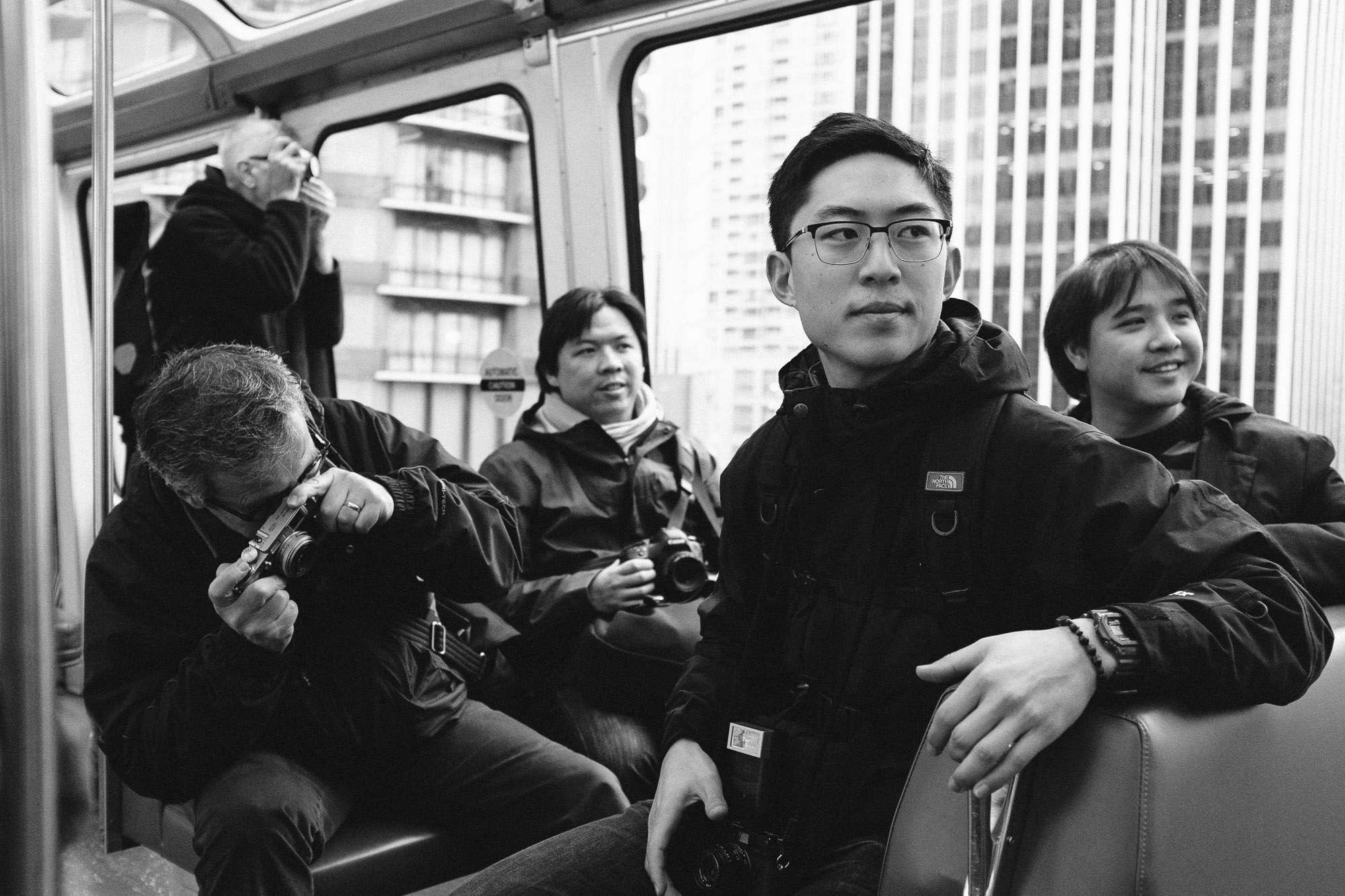 Seattle street scene with pedestrians and a red car, showcasing street photography
Seattle street scene with pedestrians and a red car, showcasing street photography
Transparency is a core principle I deeply value. When I discover something valuable or insightful, my instinct isn’t to keep it to myself. Instead, I believe in sharing it as widely as possible. This belief extends to my approach to teaching. I want to openly share my methods for leading street photography workshops, hoping it can serve as a practical blueprint for anyone wanting to Teach The Street through their own workshops. While my experience is rooted in street photography, the principles I’ll discuss are broadly applicable to teaching any photography genre, or even teaching in general.
My teaching philosophy is shaped by personal experiences and enriched by the honors pedagogy course I participated in at UCLA—USIE: Undergraduate Student Initiated Education. This course, particularly under the mentorship of Kumiko Haas, provided a foundational understanding of effective teaching. I applied these learnings when I taught a seminar on “The Sociology of Facebook and Online Social Networks” at UCLA. This experience solidified my approach to curriculum design, assignments, and facilitating engaging class discussions.
It’s important to remember that this guide reflects my personal philosophy. It’s not a one-size-fits-all solution. However, I believe you’ll find valuable insights here that can enhance your own teaching or learning journey, especially if you aim to teach the street effectively.
From Teacher to Facilitator: Guiding Street Photography Learning
 Workshop participants in discussion, illustrating facilitated learning
Workshop participants in discussion, illustrating facilitated learning
A fundamental aspect of my approach to teach the street is reframing the role of “teacher” to that of a “facilitator.” This perspective, reinforced by my USIE course at UCLA, emphasizes that learning isn’t about passively receiving information. Students aren’t empty vessels waiting to be filled. Instead, as facilitators, our role is to guide students, helping them unlock their inherent understanding and unique perspectives on the world.
In my street photography workshops, I don’t aim to simply “teach” techniques. My goal is to help students discover their own photographic vision, their individual way of seeing the street, and to empower them to express it. I see myself as a facilitator, providing the key to unlock a student’s latent photographic potential, helping them teach the street through their own lens.
Prioritizing Engagement Over Content: Making Street Photography Workshops Interactive
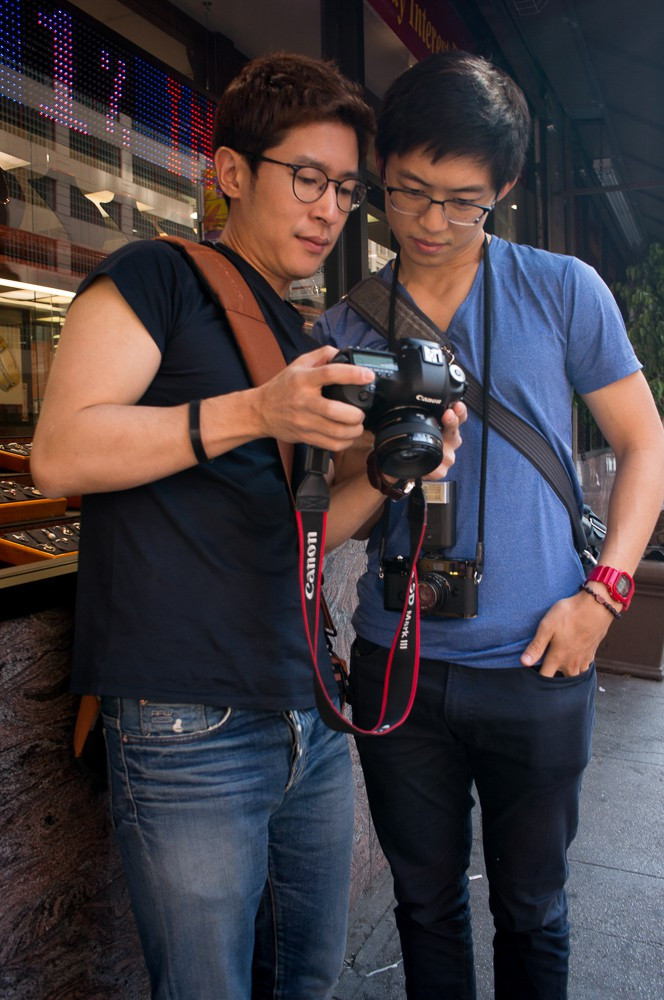 Street photography workshop participants actively shooting in an urban environment
Street photography workshop participants actively shooting in an urban environment
A common pitfall when educators teach the street is overloading students with information instead of fostering genuine engagement and interaction. I learned the power of engagement from Terri Anderson, a sociology professor at UCLA whose passion was contagious. Her classes were built around discussion, starting each session with a thought-provoking topic that sparked student participation, sharing opinions, experiences, and ideas.
This interactive approach transformed learning for me. Professor Anderson’s classes were engaging, moving away from passive lectures and PowerPoint presentations. In today’s educational landscape, where content is readily available online, the true value educators provide, especially when you teach the street, lies in fostering engagement. It’s about creating a space for students to share experiences, participate actively, and realize their potential.
In my street photography workshops, participants often come already familiar with the basic “content” of street photography through my blog and other resources. They understand camera settings and have an idea of what constitutes an “interesting” scene. What they seek is hands-on guidance and personalized coaching to truly teach the street to themselves.
Many students are aware of the techniques to overcome the fear of street photography – engaging subjects, being approachable, and taking initiative. However, they often need that extra encouragement, that gentle push to put knowledge into practice. This is where my workshops make a difference. I encourage students to step outside their comfort zones, providing physical and emotional support.
For example, while walking with a student, I might notice them hesitate when spotting a potential subject, glancing and then looking away. Recognizing this as a missed opportunity due to hesitation, I step in to offer encouragement. I might say, “I saw you looking at that person, they looked interesting. Why not take the photo? Just say hello.”
Often, the student expresses reluctance, citing awkwardness or a feeling that it’s too late. I counter these hesitations, sometimes with a playful nudge, reassuring them, “Don’t worry, I’m here with you. If anything goes wrong, I’ve got your back!”
The outcome is often transformative. Ninety-five percent of the time, the subject is receptive to being photographed. The student’s reaction is often surprise and a surge of confidence. “Wow, they were totally fine with it!” or “That was much easier than I expected!” they often say.
Crucially, I didn’t take the photo for them. They pressed the shutter, they approached the stranger, they composed the shot. They learned by doing. My role was that of a coach, providing the encouragement needed to push through their self-imposed limits and effectively teach the street to themselves.
Debunking Talent: Everyone Can Learn to See the Street
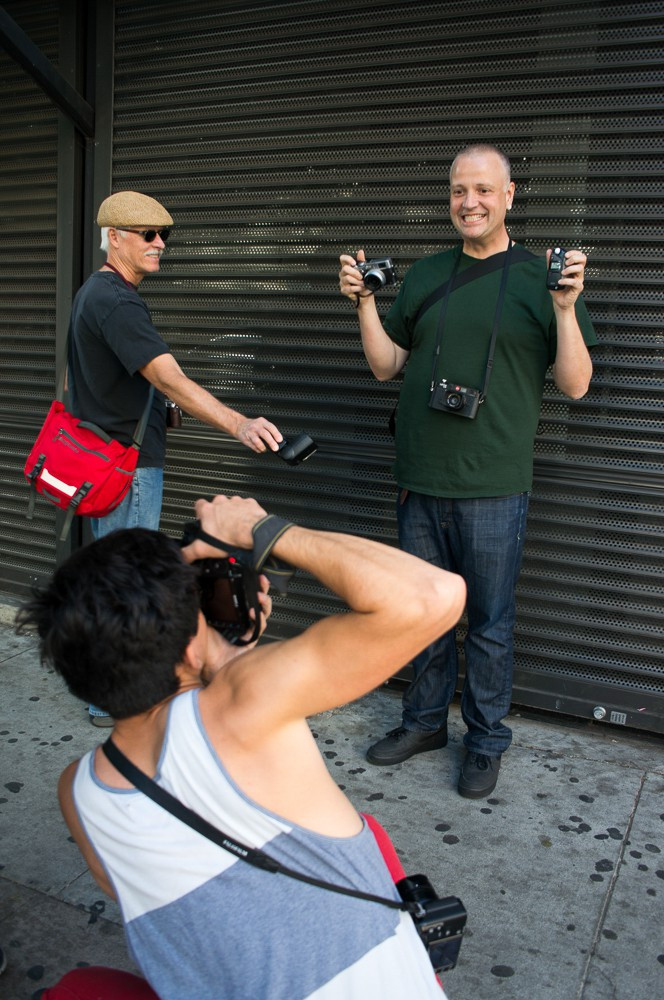 Black and white street photograph of a person walking in front of graffiti, emphasizing visual perception in street photography
Black and white street photograph of a person walking in front of graffiti, emphasizing visual perception in street photography
When it comes to street photography, the notion of innate “talent” is a myth. Every student brings a unique perspective shaped by their individual life experiences. Identifying what is compelling in the streets is subjective and learned, not inherent. To effectively teach the street, we must dismantle the idea of talent as a prerequisite. The most crucial skill, discerning interesting scenes, is developed through visual training, much like grammar in writing.
In street photography education, we are teaching “visual grammar”—composition, framing, and photographic techniques. These elements are teachable through various mediums: online resources, books, or classroom instruction. The focus should be on developing visual literacy and confidence, not on some elusive, innate talent to teach the street.
Building Confidence: The Cornerstone of Street Photography Education
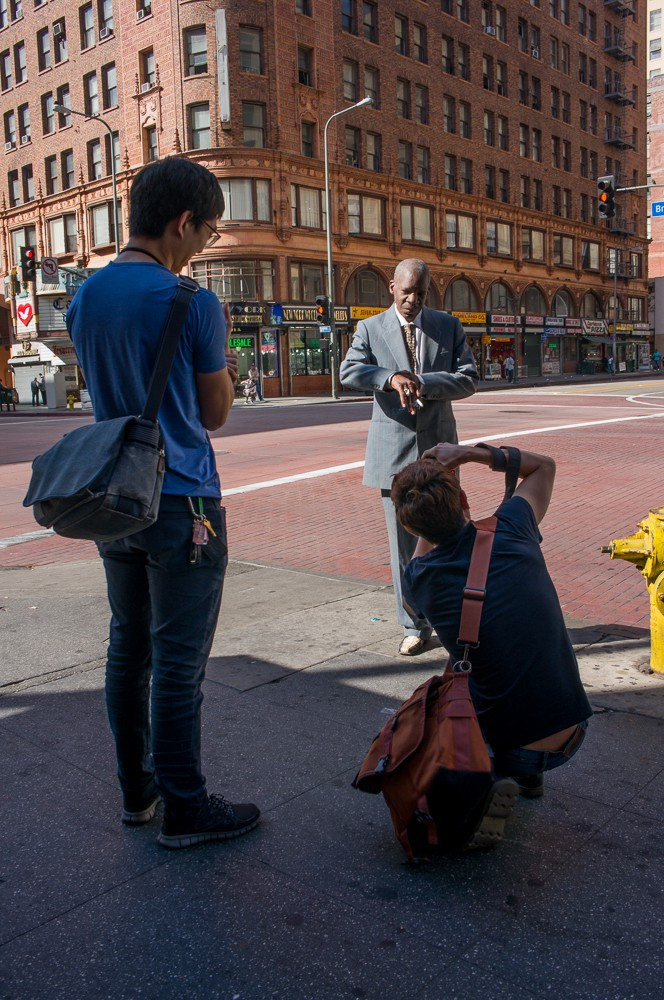 Street photographer interacting with a subject, demonstrating confidence in street photography
Street photographer interacting with a subject, demonstrating confidence in street photography
Ultimately, a core element of how I teach the street is centered around building confidence. Many aspiring street photographers struggle with the confidence to approach strangers, to take photos in public without hesitation, and to accept the inevitability of taking “bad” photos. Perfectionism can be paralyzing, preventing students from even attempting to capture the moment.
My role is to facilitate the development of self-confidence in my students. This extends beyond approaching strangers to fostering a broader self-assurance—the confidence to overcome self-criticism and to embrace creative and artistic expression. Learning to teach the street is as much about personal growth as it is about photographic skill.
Interestingly, the most significant benefit I’ve personally gained from street photography isn’t just improved photography skills. It’s been the development of greater confidence in all aspects of life. Street photography has boosted my confidence in approaching strangers in everyday situations, in trying new things, and in accepting failure as part of the process. This newfound confidence is a powerful outcome of learning to teach the street to yourself.
The 80/20 Principle in Workshop Leadership: Prioritizing Engagement
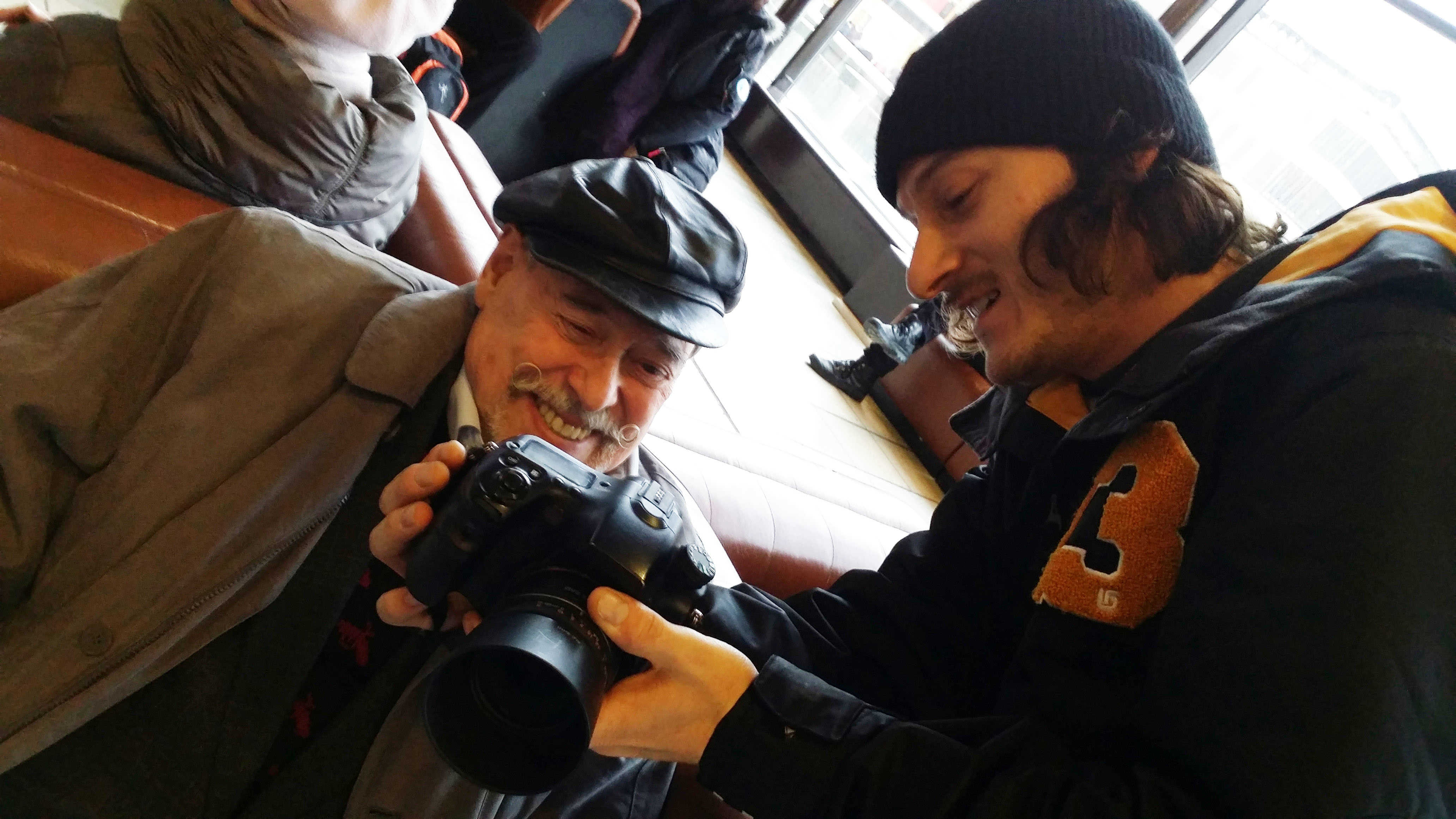 Group of workshop participants reviewing photos, highlighting collaborative learning
Group of workshop participants reviewing photos, highlighting collaborative learning
The 80/20 principle is highly applicable to leading effective workshops, especially when you teach the street. I advocate for an 80% focus on student engagement and only 20% on content delivery. Engagement includes asking questions, facilitating self-critique, encouraging students to share experiences, and guiding them to analyze compositions. This approach empowers students and creates a more dynamic learning environment when you teach the street.
Initially, I believed that providing maximum information was crucial, feeling obligated to deliver extensive content to justify workshop fees. This led to presentation-heavy workshops that, ironically, disengaged students.
Now, guided by the 80/20 principle, I keep presentations concise and focused. The core “content” of my workshops—techniques, settings, theories—is often available freely on my blog. The unique value of a workshop, especially when you teach the street, lies in the in-person engagement. This includes personalized critique, one-on-one shooting sessions, understanding individual motivations, and addressing specific questions. It’s the active, in-person interaction that truly helps students learn to teach the street to themselves.
Sample Workshop Timetable: Structuring a Street Photography Learning Experience
 Workshop schedule board, illustrating the structure of a street photography workshop
Workshop schedule board, illustrating the structure of a street photography workshop
Over years of experience teaching the street in workshops, I’ve developed a successful weekend workshop structure:
Friday (5-9pm)
- 5-6pm: Icebreakers and introductions to build community.
- 6-9pm: Initial critique session to set the stage and understand student levels.
Saturday (10am-6pm)
- 10am-12pm: Focused lecture/presentation on key street photography concepts.
- 12pm-1pm: Lunch break for informal interaction and discussion.
- 1pm-6pm: Practical shooting session in the streets, applying learned concepts.
Sunday (10am-6pm)
- 10am-12pm: Continued street shooting, focusing on individual projects.
- 12pm-1pm: Lunch break.
- 1pm-3pm: Editing session, students select their best images for review.
- 3pm-6pm: Final presentation and critique of student work, summarizing key learnings.
This timetable has proven effective in structuring a comprehensive street photography workshop. Looking ahead, I’m exploring incorporating pre-recorded lectures for students to review before the workshop, freeing up classroom time for more in-depth Q&A and practical application. The goal is to maximize in-person interaction, emphasizing what you can’t replicate online, to effectively teach the street.
Passion and Care: Investing in Your Street Photography Students
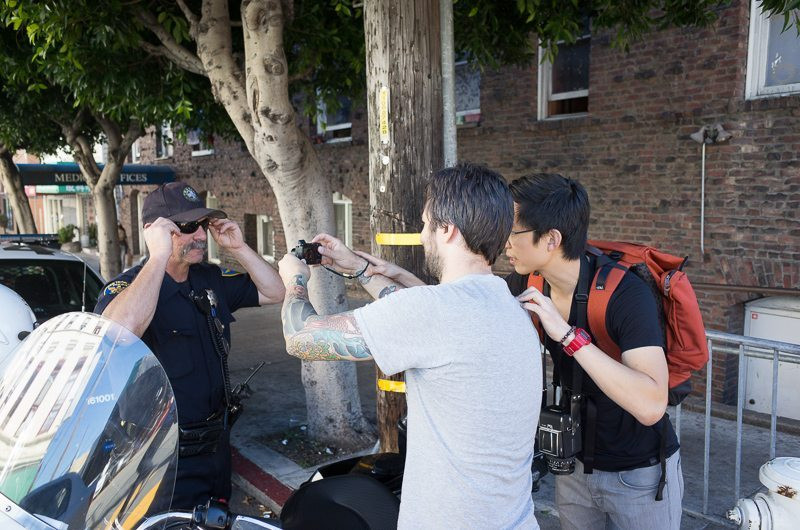 Group photo of workshop participants and instructor, showcasing community and connection
Group photo of workshop participants and instructor, showcasing community and connection
Authenticity in teaching is paramount. You can’t fake passion, care, or genuine attention for your students, especially when you teach the street. Treat your students like family, sharing your time, energy, insights, and even vulnerabilities. Transparency builds trust and connection.
Sadly, some photography teachers seem detached, merely going through the motions for financial gain. They provide basic instruction and feedback and then disappear, with no further engagement. This transactional approach misses the point of truly teaching the street.
Empathy is key: treat your students as you would want to be treated. Reflecting on my own experiences as a student, the teachers who genuinely cared made the biggest impact. Often, it was the less-tenured lecturers, not the established professors, who showed the most dedication to student learning and well-being.
When I teach the street in a workshop, I consider myself a servant to my students. I dedicate myself fully to their learning experience. This includes meeting them before and after workshop hours, engaging in conversations during breaks, being fully present and attentive during sessions (no distractions), and extending interactions into meals and evenings.
Why this level of commitment? Because I genuinely care. My students are loyal blog readers, and they invest significant time and resources to attend my workshops. This dedication deserves reciprocal commitment from me.
Some instructors treat workshops as a 9-to-5 job, clocking out at the scheduled end time. I believe some of the deepest connections and learning happen outside formal workshop hours, during shared meals and informal interactions. These communal experiences foster human connection. In fact, historical examples like the Spartans highlight how communal meals strengthen bonds within a group.
In workshops I’ve attended where instructors disengaged after the “official” end, I felt a sense of neglect. It signaled a lack of genuine care. While instructors have personal lives, a degree of personal investment in students enhances the learning experience and helps to truly teach the street.
The Power of Questions: Facilitating Discovery in Street Photography
 Instructor asking a student about a street photograph, demonstrating active learning through questioning
Instructor asking a student about a street photograph, demonstrating active learning through questioning
To maximize engagement when you teach the street, asking questions is crucial. When discussing the composition of famous street photographs, I don’t immediately offer my analysis. Instead, I pose questions to the students: “What compositional elements do you find interesting here?” or “Why do you think this photograph is effective? How does it make you feel?”
By prompting students to articulate their observations, they engage in deeper analysis. If they struggle, I offer guiding questions: “Do you see leading lines? What do facial expressions convey? What emotions are evoked? Are there distractions?”
These guiding questions facilitate “aha” moments, enabling students to articulate their understanding in their own words. This active discovery process is at the heart of effective learning when you teach the street.
Defining Learning Objectives: Guiding Students to What They Need to Know in Street Photography
 Street photographer in action, capturing a decisive moment in an urban setting
Street photographer in action, capturing a decisive moment in an urban setting
When you teach the street, consider both what students want to learn and what they need to learn. Steve Jobs famously distrusted consumer testing, believing people don’t always know what they want until they see it. Similarly, in teaching, sometimes students’ initial desires might not align with their actual learning needs.
For instance, some students fixate on gear and technical settings, overlooking the crucial aspects of vision and purpose in their photography. In such cases, my role is to gently guide them toward a more balanced perspective, helping them understand what I believe is most beneficial for their growth as street photographers. This is a crucial aspect of how to effectively teach the street.
Conversely, when students have clear objectives—creating impactful images, inspiring others, building confidence—my role shifts to supporting their specific goals. I help them navigate their chosen path, aligning my instruction with their stated needs.
As an instructor, your role is to understand student needs and guide them on a fulfilling and growth-oriented learning journey. A simple gauge of effective learning? Fun.
The Importance of Fun: Creating an Enjoyable Street Photography Workshop Experience
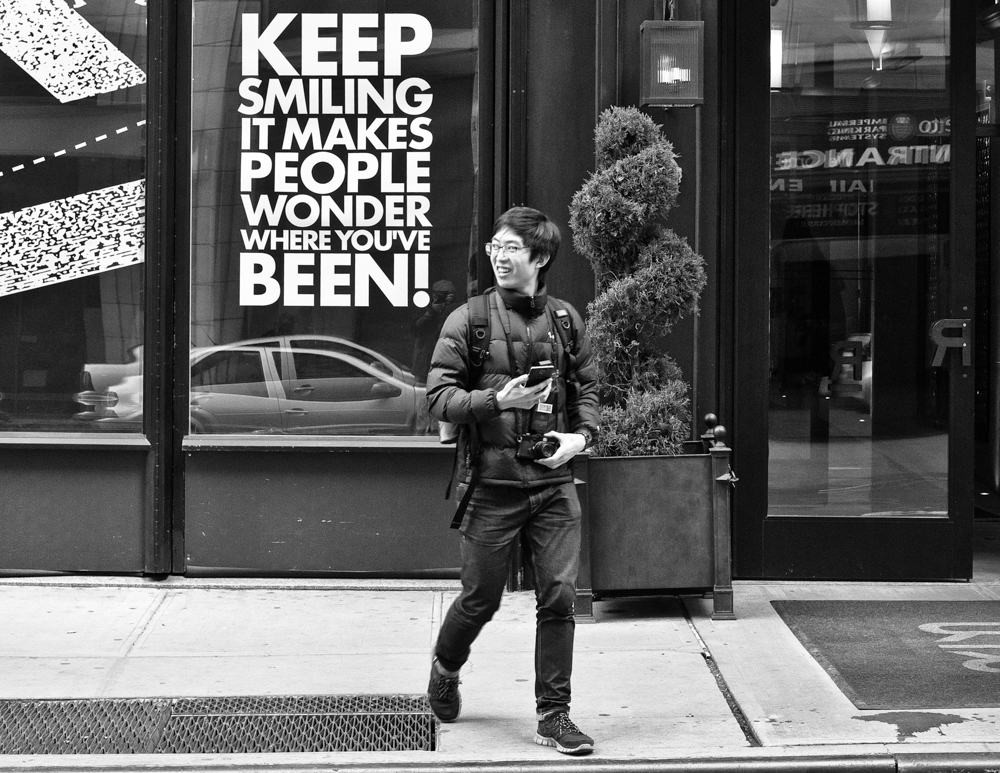 Workshop participants laughing and enjoying themselves during a street photography session
Workshop participants laughing and enjoying themselves during a street photography session
A primary goal when I teach the street is to ensure students have fun. I aim to reignite the childlike wonder we felt when we first picked up a camera, rediscovering the beauty in everyday moments. Photography should be enjoyable.
Initially, photography is often driven by pure fascination and a sense of limitless possibilities. Over time, learning rules and technicalities can diminish this initial passion. Especially when you teach the street, it’s important to counter this.
Life is inherently stressful. Workshops should be an escape, not another source of stress. I’m not advocating for coddling students, but rather recognizing that engaged and productive learning thrives in an enjoyable environment. When students are having fun making photos, they enter a state of “flow”—challenged yet comfortable, learning intensely, and feeling intrinsically motivated.
Remember those classes where boredom led to inattention? Contrast that with classes where challenging material and a supportive teacher ignited your potential, leading to a state of “flow” or being “in the zone.” This is the learning environment to cultivate when you teach the street.
Laughter, smiles, and positive energy are indicators of a fun and engaging workshop. Time flies when students are immersed and enjoying themselves. Those six-hour shooting sessions feel like minutes, filled with conversations, shared meals, street encounters, and new friendships. Creating this enjoyable atmosphere is key to successfully teach the street.
Breaking Down Teacher-Student Barriers: Fostering Mutual Learning in Street Photography
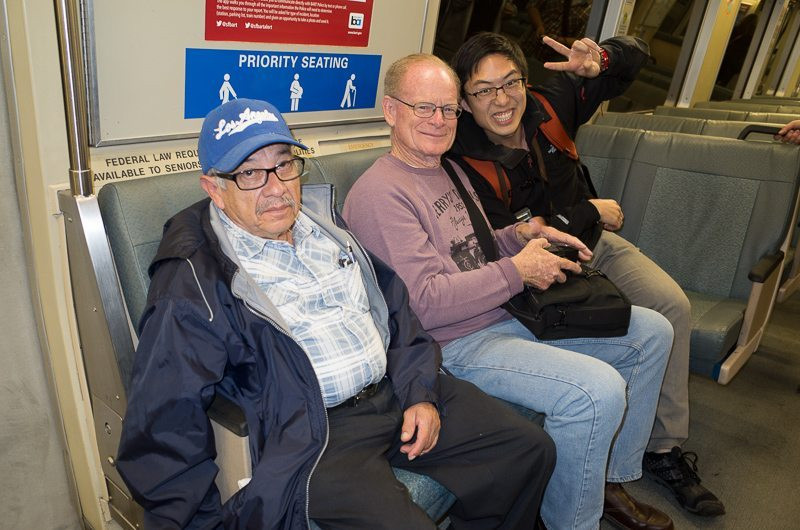 Workshop instructor and student reviewing photos together, emphasizing peer learning
Workshop instructor and student reviewing photos together, emphasizing peer learning
While instructors should provide leadership, breaking down the traditional teacher-student barrier is crucial, especially when you teach the street. The adage “When one teaches, two learn” is profoundly true.
As an instructor, you are not a sole source of wisdom dispensing knowledge. Learning is a reciprocal process. You will learn as much from your students as they learn from you. Openness, honesty, and a willingness to learn from students are essential. Thinking you know everything closes you off to valuable insights.
I’ve learned immensely from my students. Their image analyses, life philosophies, shooting experiences, techniques, artistic backgrounds, and cultural perspectives have enriched my understanding of street photography and how to teach the street.
People often ask if I get bored teaching the same workshop repeatedly. The answer is no. While the core content is similar, each workshop is unique. The students are different, the locations vary, and I myself am evolving as a teacher and photographer. Each workshop becomes a fresh experience.
I actively solicit student feedback, incorporating their suggestions for future workshops. Their diverse backgrounds and insights have led to valuable improvements, such as shooting in pairs, scheduled one-on-one time, and adjusted shooting routes.
Recognize that learning is a two-way street. Your role as an instructor isn’t superior to that of a student; they are simply different roles in a collaborative dance. This collaborative approach enhances the experience of learning to teach the street.
Embrace Flexibility: Adapting to the Unpredictable Nature of Street Photography Workshops
 Street photography instructor gesturing while teaching outdoors, emphasizing adaptability
Street photography instructor gesturing while teaching outdoors, emphasizing adaptability
Rigidity can hinder the learning process, particularly when you teach the street, which is inherently unpredictable. Workshops rarely adhere perfectly to schedules. Critiques often run longer than planned, and unforeseen issues arise.
The key is to be like bamboo—strong in structure yet flexible. Have a plan and timetable, but build in buffer time, anticipating delays. Over-prepare your content, but be ready to cut back when necessary. Flexibility minimizes stress and allows for a more organic learning flow when you teach the street.
For example, if you have a 50-slide presentation and realize you’re running short on time, don’t rush through the remaining slides. Find a natural stopping point and adapt. Remember, engagement trumps rigid adherence to content when you teach the street.
Visuals Over Words: Engaging Students Visually in Street Photography Education
 Presentation slide with a compelling street photograph and minimal text, demonstrating visual learning
Presentation slide with a compelling street photograph and minimal text, demonstrating visual learning
In presentations, especially when you teach the street, prioritize visuals over text. Excessive text distracts students, diverting their attention from your spoken presentation. The most impactful lectures are often those delivered orally, relying on compelling narration rather than text-heavy slides. This echoes the long-standing oral tradition of teaching.
In photography education, visuals are essential. When preparing presentations, use images extensively and minimize text. Section headings and image captions (photographer, location, date) are acceptable, but avoid lengthy text blocks.
We are visual learners. Use impactful photographs to illustrate your points. Less is more. In-depth analysis of a few strong images is more effective than a superficial overview of many. Focus on quality over quantity when you teach the street through visual examples.
The Power of One-on-One Time: Personalized Attention in Street Photography Workshops
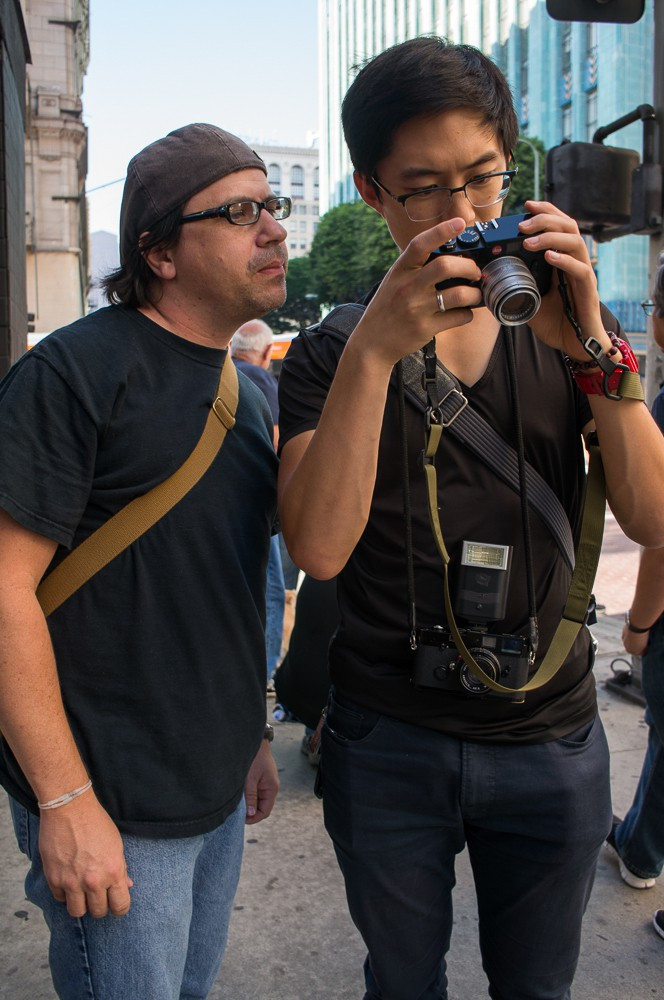 Instructor providing one-on-one feedback to a student on their camera, highlighting personalized learning
Instructor providing one-on-one feedback to a student on their camera, highlighting personalized learning
Whether you have ten or a hundred students, give each student your undivided attention during interactions, especially when you teach the street. While it’s natural to feel guilty when focusing on one student while others wait, focused attention is more valuable than diluted attention spread thinly.
When interacting with a student, politely acknowledge others and assure them you’ll get to them. Then, fully focus on the student in front of you. Silence your phone, be an active listener, and resist interrupting. Practice the “two-second rule”—pause briefly before responding to ensure you’ve fully heard the student.
One-on-one shooting time is also crucial. For larger workshops, divide students into pairs and schedule individual shooting sessions throughout the day. For example, allocate hourly slots for pairs of students to shoot with you while others practice independently, meeting at designated times. Think of these as “office hours” for personalized instruction when you teach the street.
On the final day, dedicate time for individual image critiques. After students have selected their best photos, provide focused one-on-one feedback on their laptops. Use this time for detailed critique, addressing specific questions about composition, settings, or even reviewing past work. This personalized attention is invaluable.
As an instructor, be like a laser, focusing your energy intensely on each student in turn, rather than spreading it thinly. This focused attention is a powerful expression of care and enhances the learning experience when you teach the street.
Conclusion: Tailoring Your Approach to Effectively Teach the Street
 Group photo of smiling workshop participants and instructor, celebrating a successful learning experience
Group photo of smiling workshop participants and instructor, celebrating a successful learning experience
This guide offers insights based on my personal experiences teaching the street in workshops. My approach is constantly evolving, and no two workshops are identical. Adapt and refine your methods based on what resonates with you and your students.
Take what you find useful from this guide and discard the rest. Teaching is a personal journey, and the most effective approach is one that aligns with your strengths and your students’ needs. Experiment, reflect, and continuously refine your methods to effectively teach the street and inspire the next generation of street photographers.
Behind-the-Scenes Workshop Videos:
Shooting the streets of Downtown LA, 2014
Shooting the streets of Downtown LA, 2014
Critique session in Sydney, 2014
Critique session in Sydney, 2014
Downtown LA Testimonial Video, 2014
Downtown LA Testimonial Video, 2014

